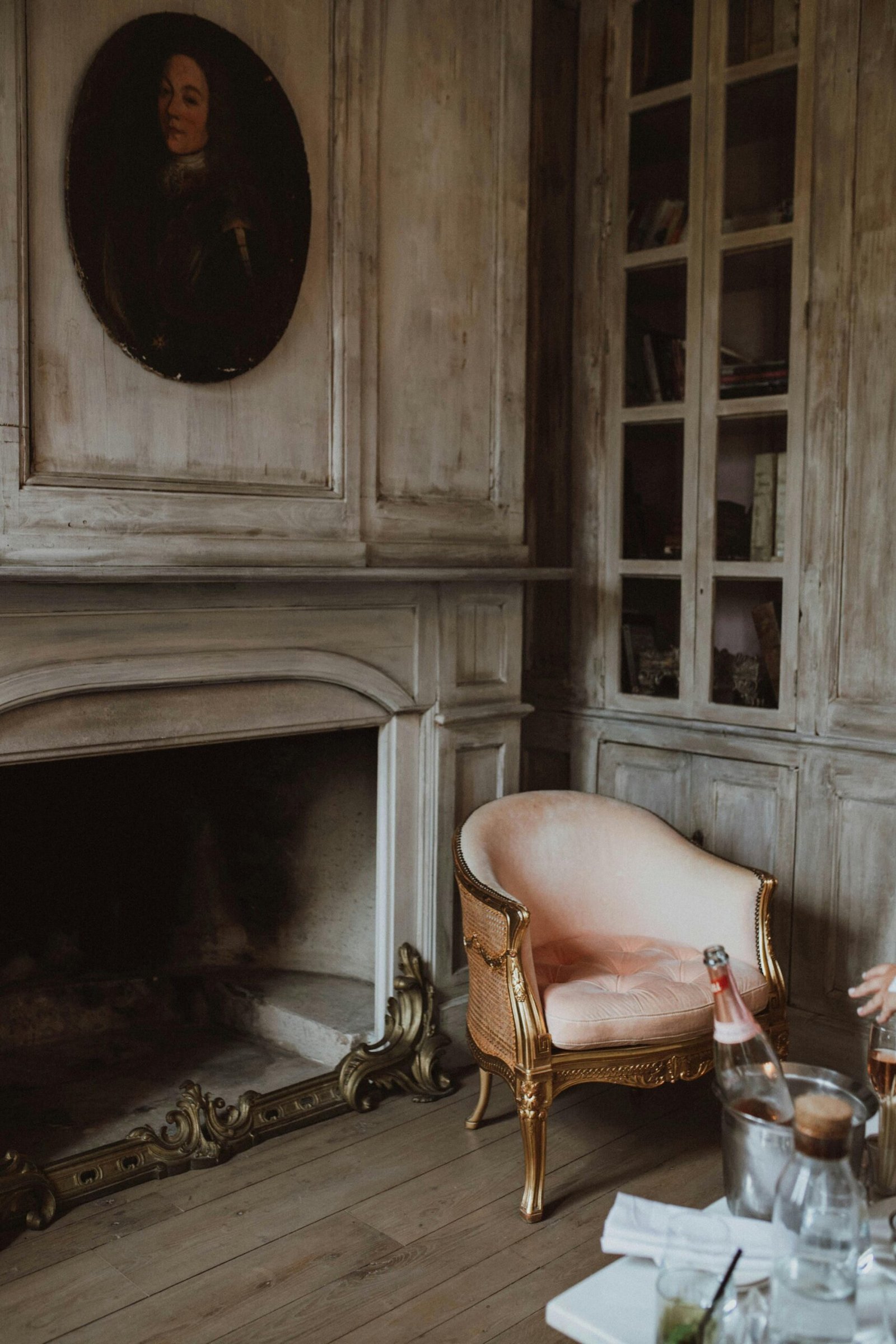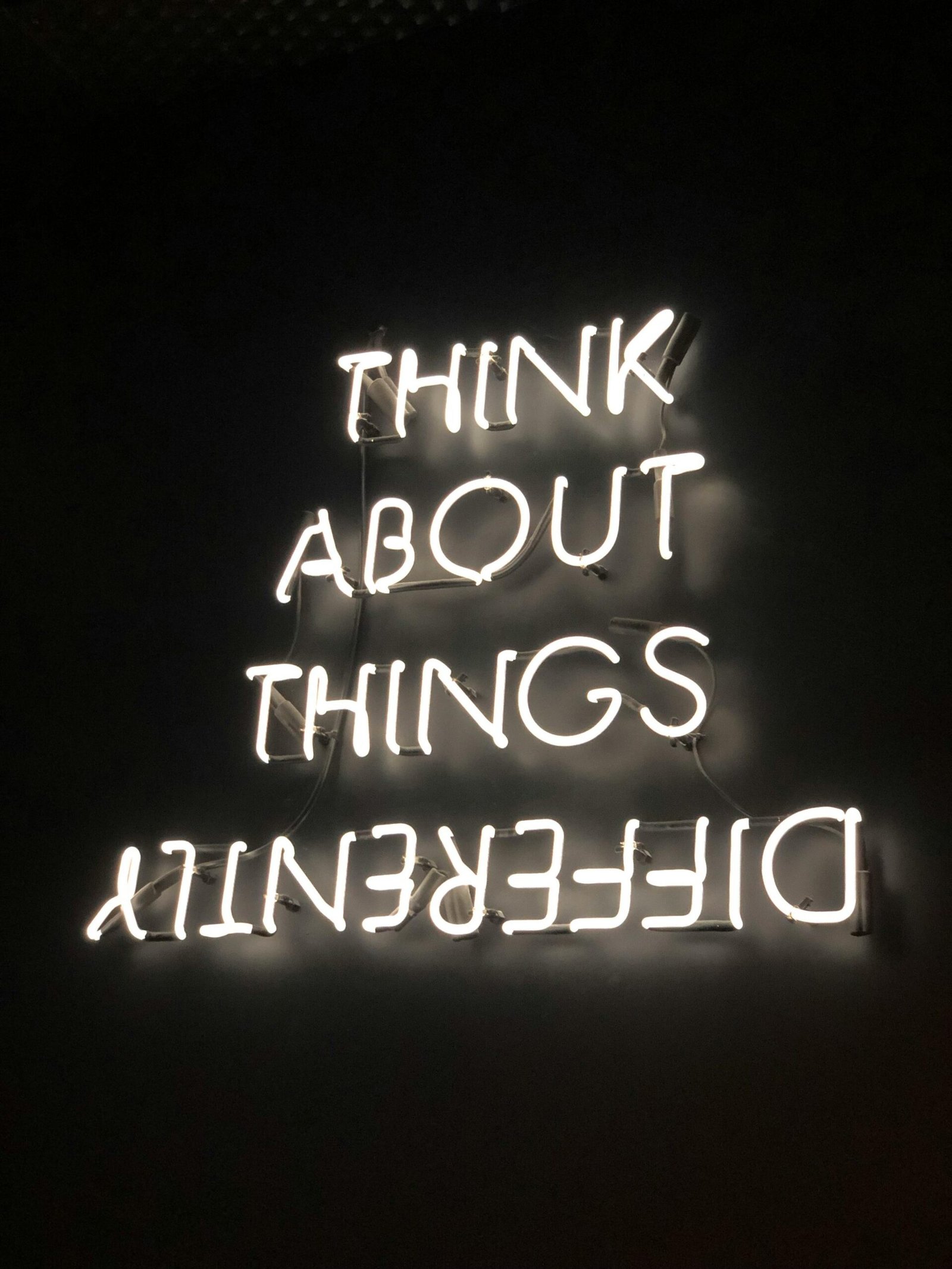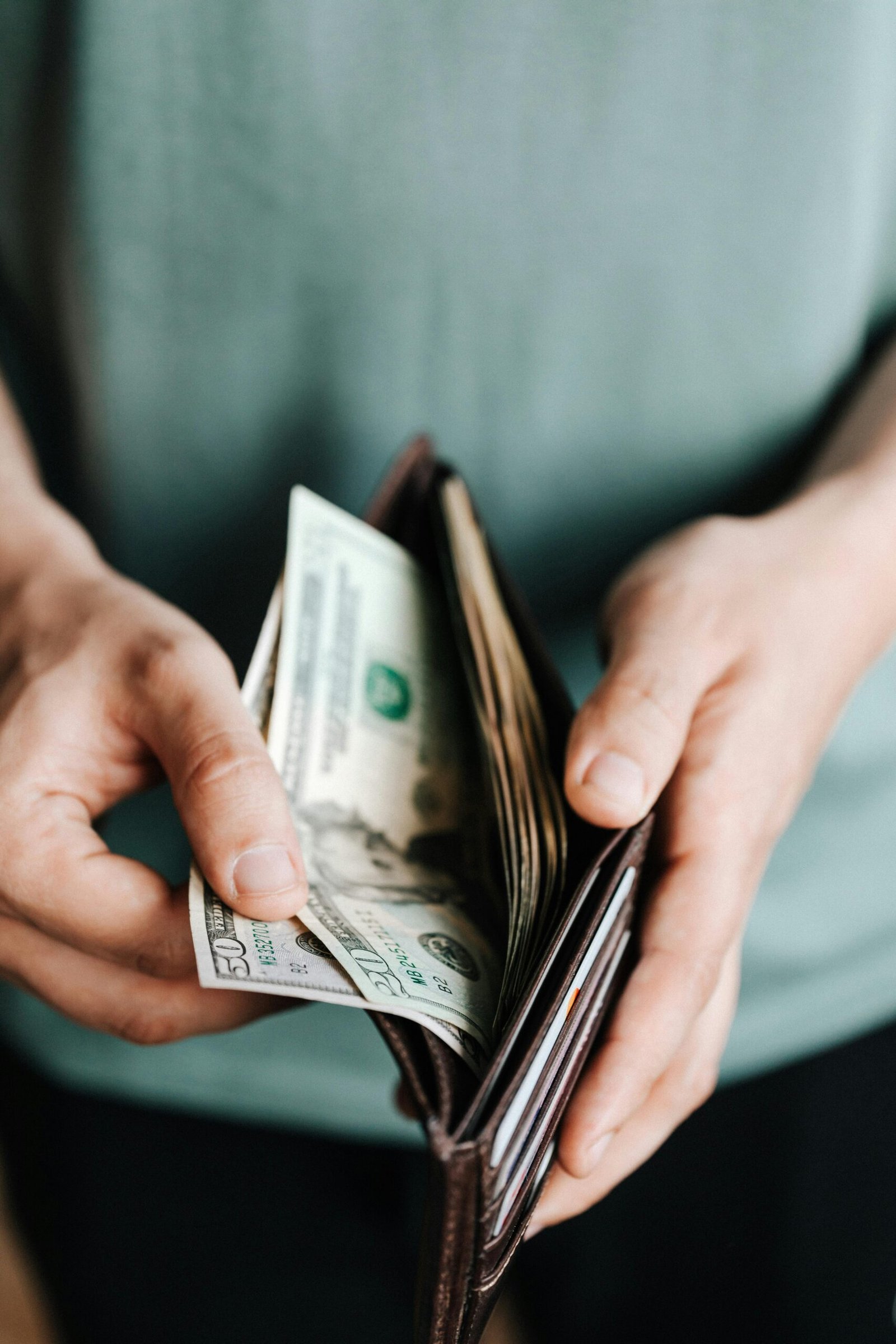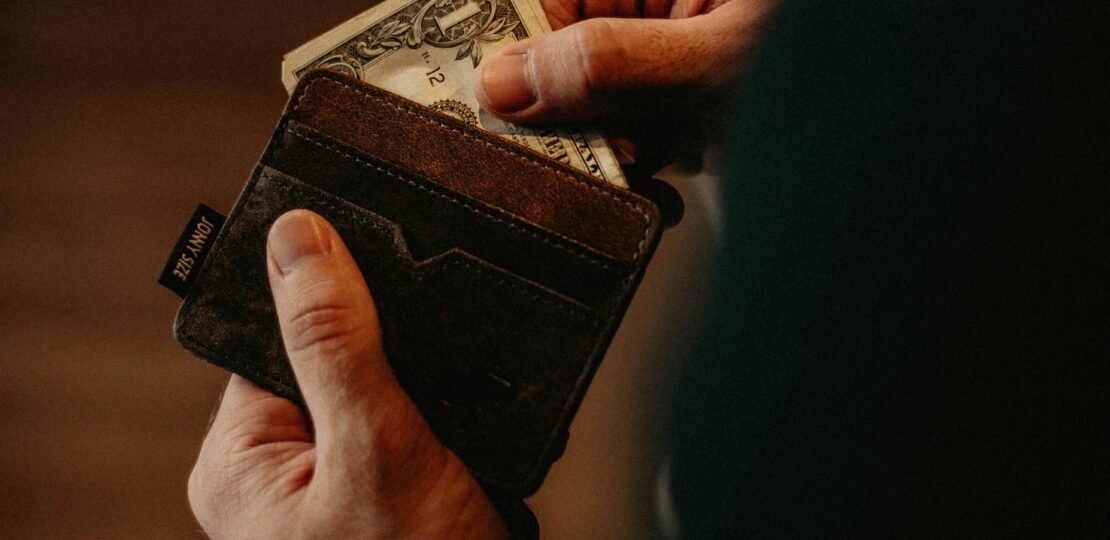
Looking to add some personal flair to your everyday accessories? Look no further than these Easy DIY Wallet Projects for Beginners. Whether you’re a crafting novice or just looking for a fun and creative way to showcase your style, these wallet projects are perfect for you. From simple fabric designs to upcycling old materials, this article will guide you through step-by-step instructions to create your very own unique and stylish wallet. Get ready to unleash your inner maker and jazz up your wallet game with these easy and accessible projects.
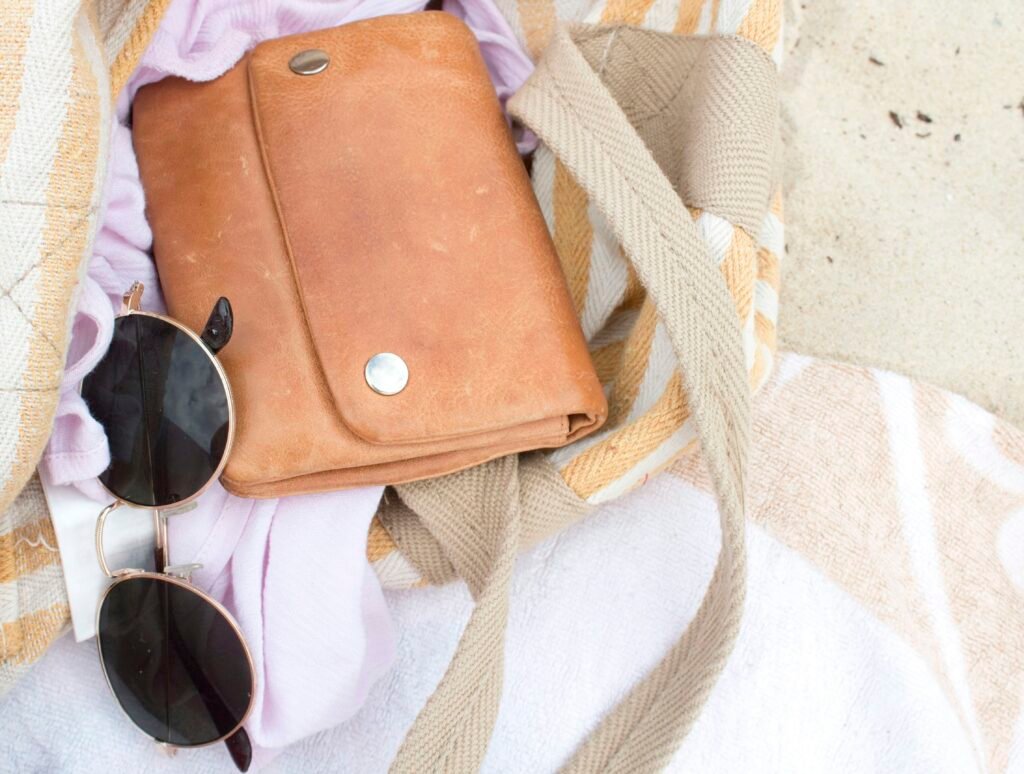
This image is property of images.unsplash.com.
Check out our product reviews.
Choosing the Right Materials
When embarking on a DIY wallet project, one of the first steps is choosing the right materials. By selecting high-quality fabrics and supplies, you can ensure that your finished wallet will be both durable and stylish.
Different Types of Fabrics
There is a wide variety of fabrics that can be used to create a wallet, each with its own unique characteristics. Cotton fabrics are great for beginners, as they are easy to work with and come in an array of vibrant prints. If you’re looking for a more luxurious option, consider using leather or suede. These materials add a touch of sophistication to your wallet and can be a great choice for more formal occasions. Other options include canvas, denim, and felt, which all offer their own distinct look and feel.
Tools and Supplies Needed
In addition to the fabric, you’ll also need a few essential tools and supplies to complete your DIY wallet project. These include:
- Fabric scissors: A good pair of fabric scissors is essential for cutting the fabric neatly and accurately.
- Sewing machine: While it is possible to hand-sew a wallet, a sewing machine can greatly speed up the process and ensure a more professional finish.
- Thread: Choose a thread color that complements your fabric.
- Pins and needles: These are used to hold the fabric pieces together while sewing.
- Closures: Depending on the design of your wallet, you may need buttons, snaps, zippers, or Velcro for closures.
- Optional embellishments: If you want to add personalized touches to your wallet, consider getting embroidery floss, fabric paint, or decorative stitches.
With these materials and tools in hand, you’re now ready to dive into creating your very own wallet!
Basic Wallet Designs
Before you start cutting and sewing, it’s important to decide on a wallet design that suits your needs and personal style. Here are a few simple wallet designs to consider:
Simple Bi-fold Wallet
The bi-fold wallet is a classic design that offers plenty of storage space for cards, bills, and even coins. It typically features a single fold and multiple card slots on either side. This design is perfect if you’re looking for a functional wallet that is easy to make and use.
Tri-fold Wallet
If you prefer a wallet with more compartments, the tri-fold design may be the one for you. With two folds, this wallet provides additional storage options, including a clear ID slot, multiple card slots, and a bill compartment. While it may be slightly more complex to make, the tri-fold wallet offers maximum organization and is great for those who carry a lot of cards.
Card Holder
For those who prefer a minimalist approach, a card holder may be the perfect choice. This slim wallet is designed to hold just a few cards and fits easily into your pocket. It’s a quick and easy project that is great for beginners or those who only need to carry a few essentials.
Coin Purse
If you find yourself frequently reaching for loose change, a coin purse is a handy addition to your DIY wallet collection. This small zippered pouch keeps your coins secure and prevents them from getting lost in the depths of your bag. Plus, it can be easily customized with different fabrics and closures to match your personal style.
Check out our product reviews.
Step-by-Step Instructions
Now that you have chosen your desired wallet design, it’s time to get down to the nitty-gritty of actually making it. Follow these step-by-step instructions to create your very own DIY wallet.
Cutting the Fabric
Before you start sewing, you need to prepare your fabric pieces. Begin by measuring and marking the dimensions for each component of your chosen wallet design. Using fabric scissors, carefully cut out the required pieces, making sure to stay as precise as possible.
Sewing the Pieces Together
Once you have your fabric pieces ready, it’s time to start sewing them together. Lay out the fabric components according to your wallet design and use pins to hold them in place. If you are using a sewing machine, set it to the appropriate stitch length and follow the designated sewing lines. Alternatively, if you prefer hand-sewing, use a needle and thread to stitch the fabric pieces together.
Adding Pockets and Slots
Now that the main structure of your wallet is complete, it’s time to add the pockets and slots for cards and bills. For a bi-fold or tri-fold wallet, fold the fabric along the designated lines and stitch the edges to create the desired compartments. If you’re making a card holder, simply stitch the sides of the fabric pieces together to create individual card slots.
Attaching Closures
Once your wallet has all the necessary pockets and slots, it’s time to add the closures. Depending on your design, this could involve attaching buttons, snaps, zippers, or Velcro. Secure the closures to the fabric by hand or using a sewing machine, ensuring they are positioned correctly for easy opening and closing.
With these step-by-step instructions, you’ll be well on your way to creating a personalized and functional wallet that fits your style and needs.
Tips and Tricks for Beginners
If you’re new to DIY projects, sewing, or wallet making, here are some helpful tips and tricks to make the process even easier.
Start with Basic Designs
As a beginner, it’s best to start with simple wallet designs. This will allow you to practice your sewing skills and familiarize yourself with the construction process. Once you become more comfortable, you can gradually move on to more complex designs.
Practice Sewing Techniques
Before diving into your wallet project, take some time to practice your sewing techniques on scrap fabric. This will help you get a feel for your sewing machine (if you’re using one) and allow you to perfect your stitch length and tension.
Take Measurements Carefully
Accurate measurements are essential for creating a well-fitting wallet. Use a ruler or measuring tape to ensure precise dimensions when cutting your fabric pieces. Taking your time during this step will prevent any mishaps in the later stages of the project.
Use Pins to Secure Fabric
When sewing fabric pieces together, it can be helpful to use pins to hold them in place. This ensures that the pieces don’t shift or move while you are sewing, resulting in a cleaner and more polished finish.
These tips and tricks will set you up for success as you venture into the world of DIY wallet making.

This image is property of images.unsplash.com.
Adding Personalized Touches
One of the joys of DIY projects is the ability to add personalized touches to your creations. Here are some ideas to make your wallet truly one-of-a-kind.
Embroidery and Applique
If you have basic embroidery skills, why not add some decorative stitches to your wallet? Embroidery floss can be used to create intricate patterns, initials, or even small designs. Applique is another technique where you can sew fabric cutouts onto your wallet for added visual interest.
Fabric Painting
For those with a flair for painting, fabric paint offers endless possibilities for customizing your wallet. Use paints and brushes to add colorful designs, patterns, or even quotes. Let your creativity shine!
Decorative Stitches
Give your wallet an extra touch of flair by incorporating decorative stitches into your design. Many sewing machines have built-in decorative stitch options, such as scallops, waves, or flowers. Experiment with different stitches to find the one that best complements your fabric and design.
By adding these personalized touches, you can transform a simple wallet into a unique and special accessory.
Upcycling Old Materials
If you’re looking for a sustainable option or simply want to give new life to old materials, consider upcycling for your wallet project.
Using Old Jeans
Old jeans can be a fantastic material for creating a sturdy and stylish wallet. Cut out sections of denim fabric and repurpose the pockets for card holders or coin compartments. The worn-in look of the denim adds a casual and trendy element to your wallet.
Repurposing Leather or Felt
If you have any old leather jackets, bags, or scraps lying around, why not repurpose them into a wallet? Leather or felt can add a touch of elegance and durability to your project. Cut out your fabric pieces and follow the same steps outlined above to create a unique and environmentally-friendly wallet.
By upcycling old materials, you not only reduce waste but also add a touch of character to your DIY wallet.
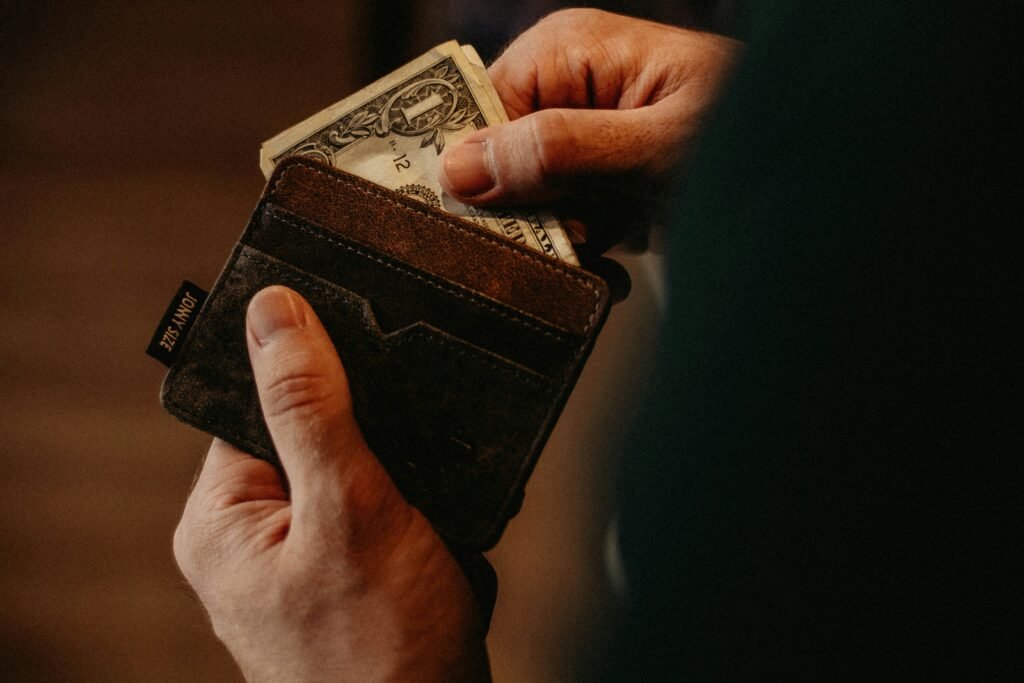
This image is property of images.unsplash.com.
Wallet Maintenance and Cleaning
Once you’ve made your own wallet, it’s important to know how to properly care for and clean it to ensure its longevity.
Cleaning Tips
Regularly wiping down your wallet with a mild soap solution and a soft cloth will help keep it clean and free from dirt and stains. For fabric wallets, spot cleaning is usually sufficient, while leather wallets may benefit from a leather cleaner or conditioner to maintain their softness and luster.
Storing Your Wallet
When you’re not using your wallet, it’s important to store it in a safe and dry place. Avoid exposing it to extreme temperatures, direct sunlight, or moisture, as these can cause damage to the fabric or leather. If you want to keep your wallet in pristine condition, consider storing it in a dust bag or a protective pouch.
By following these maintenance and cleaning tips, you can enjoy your handmade wallet for years to come.
Inspiring Wallet Ideas
Need some inspiration for your next wallet project? Here are a few ideas to get your creative juices flowing.
Printed Fabric Wallets
Choose a fabric with a bold or unique print to create eye-catching wallets. From floral patterns to geometric designs, the possibilities are endless. Play with fabric combinations or add contrasting details to make your wallet truly stand out.
Patchwork Designs
Patchwork wallets are not only visually appealing but also a great way to use up small fabric scraps. Combine different colors and textures to create a dynamic and eclectic look. The patchwork technique adds depth and personality to your wallet.
Quilted Wallets
Quilting is a technique that involves stitching multiple layers of fabric together. Create a quilted wallet by sewing together pieces of fabric with a layer of batting in between. This not only adds a cozy and tactile element but also provides extra durability and insulation.
With these inspiring wallet ideas, you’ll have no shortage of creativity when it comes to designing your next DIY project.
Finding Online Tutorials and Patterns
If you’re looking for more guidance or inspiration, there are plenty of online resources available to help you along the way.
Websites and Blogs to Follow
Many websites and blogs specialize in DIY projects and offer tutorials, patterns, and tips specifically for wallet making. Some popular options include Sewing.com, WeAllSew.com, and SewCanShe.com. These websites provide detailed instructions and step-by-step photos to guide you through the process.
Video Tutorials
If you prefer visual guidance, video tutorials can be a great resource. Websites like YouTube offer a vast selection of DIY wallet tutorials where you can watch each step being demonstrated. Many crafters also share their tips and tricks, making it easier for beginners to follow along.
By exploring these online tutorials and patterns, you’ll find a wealth of information to assist you in creating your perfect wallet.
Gifting DIY Wallets
DIY wallets make excellent gifts for friends and family. The thought and effort put into creating a personalized wallet will surely be appreciated. Here are a few tips to ensure your DIY wallet gift is a success.
Choosing the Right Design for the Recipient
Consider the recipient’s style and needs when choosing a wallet design. For example, if they frequently travel, a cardholder or coin purse may be more practical. If they prefer a minimalist look, opt for a sleek bi-fold wallet. By tailoring the design to their preferences, you’re sure to create a gift that they will love.
Personalizing the Wallet with Initials
Adding initials is a simple yet effective way to personalize a wallet. Consider embroidering or appliquéing the recipient’s initials onto the fabric. This small touch makes the gift even more special and demonstrates the extra thought that went into creating it.
Gift Wrapping Ideas
To make your DIY wallet gift even more appealing, spend some time on the presentation. Wrap the wallet in a beautiful piece of fabric or place it inside a decorative box. Consider attaching a handwritten note or a small charm for an added touch. The recipient will be delighted by the attention to detail.
With these tips, gifting a DIY wallet will become a memorable and cherished gesture.
In conclusion, DIY wallet projects offer a creative and rewarding way to express your personal style while also adding functional accessories to your wardrobe. By choosing the right materials, following step-by-step instructions, and adding personalized touches, you can create a wallet that is truly unique. Whether you’re a seasoned crafter or a beginner looking to explore your creative side, making your own wallet is a fun and fulfilling endeavor. So gather your materials, put on your sewing hat, and get ready to embark on a creative journey with a DIY wallet project!
RELATED POSTS
View all
